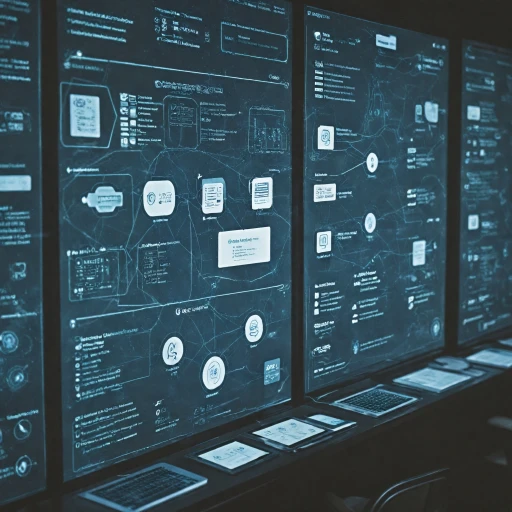
Understanding Applicant Tracking Systems (ATS)
Demystifying the Role of Applicant Tracking Systems in Recruitment
Understanding Applicant Tracking Systems (ATS) is crucial for anyone involved in the recruitment process. These systems are not just digital platforms but integral elements that facilitate various stages of hiring. They help streamline the applicant's journey, enhancing the candidate experience by simplifying the often cumbersome process of talent acquisition. Applicant tracking systems are essentially software systems used by hiring managers to track and manage top talent applications. These platforms are designed to save time and resources by automating several aspects of the recruitment process. With the rise of digital records, systems ats have moved away from paper free methods and embraced a more sophisticated approach to recording potential employee data. This transformation allows for a smoother, more efficient hiring process. ATS platforms perform the dual role of recruitment and digital record keeping. They not only keep tabs on applicants throughout the hiring journey but also maintain an organized digital record of candidates. Such systems are invaluable for employers aiming to maintain a strong employer branding, as they ensure a faster, more efficient application process, enhancing the overall candidate experience. Employers are also increasingly relying on the functionalities of AI-enhanced ats software, which integrates seamlessly with social media and other digital platforms to source and track candidates. This advanced level of integration ensures that the recruitment process is both comprehensive and targeted. Systems with these capabilities are pivotal in enabling companies to stay ahead in the competitive race for top talent. For more information on how ATS systems manage applicant records, visit the AIHR Institute's detailed breakdown on ATS functionalities here.The Mechanics of Digital Record Keeping
How Digital Records are Kept and Organized
The mechanics of keeping digital records in Applicant Tracking Systems (ATS) is a sophisticated process that ensures hiring managers can efficiently navigate through massive volumes of candidate data. Essentially, ATS platforms function as a vast repository that collects, stores, and organizes candidate information throughout the recruitment process. Let's delve deeper into how this is achieved. Candidate information flows into the system when an application is submitted via job portals, social media, or company websites. The ats software then captures various data points, including qualifications, work history, and skills. This information is stored in a digital format making it easy to access and analyze. By maintaining digital records, ats platforms can efficiently track and manage every stage of the hiring journey from initial contact to final placement. As part of the digital record keeping mechanism, applicant tracking systems leverage databases to organize information such as interview scheduling and recruitment stages. Once a candidate enters the system, all their records are maintained systematically allowing for easy retrieval and ensuring no information is lost in the recruitment funnel. Moreover, digital records facilitate paper free recruitment, aligning with modern practices in talent acquisition. Utilizing systems ats in this manner enhances the candidate experience by streamlining the application process and accelerating the response time. By creating a seamless integration of record keeping within the ATS, organizations can ensure they attract top talent effectively and reinforce their employer branding through an organized hiring process. For startups and businesses seeking efficient solutions, exploring the best recruiting software for startups can significantly improve data management and candidate interactions, ultimately contributing to successful recruitment endeavors.Benefits of Digital Records in Recruitment
Advantages of Maintaining Digital Candidate Records
In today's competitive job market, implementing digital records in recruitment processes brings numerous advantages that can significantly enhance the efficiency and effectiveness of Applicant Tracking Systems (ATS). Here's why maintaining digital records is a crucial step forward for both hiring managers and candidates.- Streamlined Recruitment Process: ATS platforms enable recruiters to effectively manage large volumes of applicant data, providing a seamless experience from sourcing potential employees to extending offers. Having a structured record keeping process helps in identifying and nurturing top talent efficiently.
- Improved Candidate Experience: A well-managed digital record ensures clear communication, reducing the likelihood of candidates getting lost in the recruitment process. Through organized data tracking, candidates perceive a well-structured and professional employer branding, enhancing their overall satisfaction.
- Enhanced Decision Making: With comprehensive digital records, hiring managers can draw insights from data-driven decisions. This helps in matching candidates to roles more accurately, ensuring that the selected applicant is the best fit for the job and the organization.
- Efficient Resource Management: Moving to a paper free environment reduces overhead costs associated with physical documentation, and a digital approach results in faster and more efficient access to candidate data.
- Integration with Modern Technologies: Digital records are vital for harnessing the potential of AI enhancements in recruitment. From interview scheduling to analyzing social media presence, modern ATS software leverages these records to provide deeper insights (explore how AI can enhance recruitment tasks).
Privacy Concerns and Data Protection
A Balancing Act: Privacy and Data Protection
The digitization of recruitment processes through Applicant Tracking Systems (ATS) has undoubtedly revolutionized how organizations manage candidate information. However, this evolution brings with it significant privacy concerns. With every digital record created, the question arises: how can these systems ensure data protection and compliance with privacy laws? Firstly, it's essential to understand that ATS platforms are not merely digital repositories. They are sophisticated systems designed to not only store but also manage and process candidate data throughout the recruitment process. This involves collecting information from resumes, social media profiles, and other online sources. While these mechanisms enhance the hiring process by enabling a deeper insight into potential employees, they also raise important questions about data security. To safeguard candidate information, ATS developers must strictly adhere to data protection regulations such as the GDPR or the CCPA. These laws mandate that any system handling personal data must implement stringent security measures. For instance, encryption methods, access controls, and regular audits are vital components in ensuring that digital records are maintained securely. Moreover, candidates themselves play a crucial role in the data privacy equation. It's vital for organizations to ensure transparency by informing candidates about how their data will be used and obtaining their consent for various uses. Clear communication about data handling practices can enhance employer branding by building trust in the company's recruitment process. Despite these measures, there is always a risk involved. As ATS platforms continue integrating advanced technologies like AI, ensuring robust privacy measures becomes even more critical. AI can optimize the applicant tracking system by enhancing the overall candidate experience and accelerating the hiring process. However, its implementation must be thoughtfully managed to avoid potential privacy compromises. Hiring managers and talent acquisition teams must always question: Are their current systems meeting the required legal standards? Are there continuous updates to protect against new threats? Addressing these questions is key to maintaining candidate trust while leveraging the full potential of digital records in ATS software.The Role of AI in Enhancing ATS
AI's Hand in Advancing Applicant Tracking Systems
The integration of artificial intelligence (AI) into applicant tracking systems (ATS) is transforming the recruitment landscape in profound ways. By enhancing these systems, AI is reshaping how organizations approach the hiring process, focusing on efficiency and precision to ensure top-tier talent acquisition.
AI plays a pivotal role in streamlining the recruitment process through automation and analytics. By leveraging AI, ATS platforms can intelligently parse resumes and identify potential candidates with greater accuracy. This capability not only quickens the process of sifting through numerous applicants but also minimizes human errors. The use of AI in these systems ensures that hiring managers can focus on engaging with the most promising candidates, enhancing the overall candidate experience.
Moreover, AI’s predictive analytics capabilities provide a layer of depth previously unattainable in understanding candidates' suitability. By analyzing vast amounts of data, AI can offer insights into a candidate's potential for success within a particular role, thereby optimizing the selection process. These analytics also contribute to improving the employer branding by ensuring that shortlisted candidates align with the company's culture and values.
Interview scheduling is another arena where AI’s involvement has marked significant improvements. By automating the scheduling process, AI reduces the friction often associated with coordinating between candidates and hiring teams. This paper-free approach not only saves time but also enhances the overall efficiency of the ATS software.
As organizations continue to adopt advanced systems, the assurance of data privacy and security remains paramount. AI aids in maintaining robust digital record-keeping by implementing sophisticated security measures. These systems are designed to protect both the company’s sensitive data and the candidates’ personal information, ensuring trust throughout the recruitment journey.
In conclusion, AI is a game-changer in enhancing applicant tracking systems, ensuring that every aspect of the recruitment process is optimized for efficiency and effectiveness. By enabling more precise candidate tracking and data management, AI stands as a cornerstone in the digital evolution of recruitment methods, paving the path for future innovations in talent acquisition.











